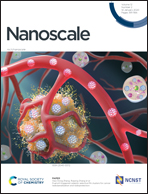Superconducting straintronics via the proximity effect in superconductor–ferromagnet nanostructures
Abstract
We propose the concept of superconducting straintronic devices based on the proximity effect at superconductor–ferromagnet interfaces and the ability of ferromagnets with a strong magnetoelastic coupling to change magnetization orientations under strain. Since strains can be generated electrically with the aid of a piezoelectric transducer attached to a superconductor–ferromagnet nanostructure, the power consumption of the resulting hybrid straintronic device could be greatly reduced in comparison with a superconducting spin valve operated by external magnetic field. To demonstrate the feasibility of our proposal, we theoretically describe the strain-mediated magnetoelectric control of the critical temperature Tc in asymmetric ferromagnet–superconductor–ferromagnet trilayers integrated onto a ferroelectric substrate. To that end, Tc is first calculated as a function of the misorientation angle Δϕ between the in-plane magnetizations of the two ferromagnetic layers. Numerical calculations performed for CoFe/Nb/NiCu trilayers show that, at optimal nanoscale thicknesses of superconducting and ferromagnetic films, the variation of Δϕ may change Tc significantly (ΔTc ∼ 1 K). Then electric-field-induced magnetization rotations are determined for CoFe/Nb/NiCu trilayers coupled to the Pb(Zn1/3Nb2/3)O3-6%PbTiO3 single crystal. It is found that, owing to the opposite sign of the magnetoelastic coupling in CoFe and NiCu alloys, the misorientation angle Δϕ can be changed by up to 90° without the introduction of an antiferromagnetic pinning layer. As a result, the electrical switching of the Nb interlayer between the superconducting state and a finite-resistance state appears to be possible in a narrow temperature range. Hence the described multiferroic hybrid can be employed as an electrically controlled resistive switch useful for memory and logic applications in cryogenic electronics.



 Please wait while we load your content...
Please wait while we load your content...